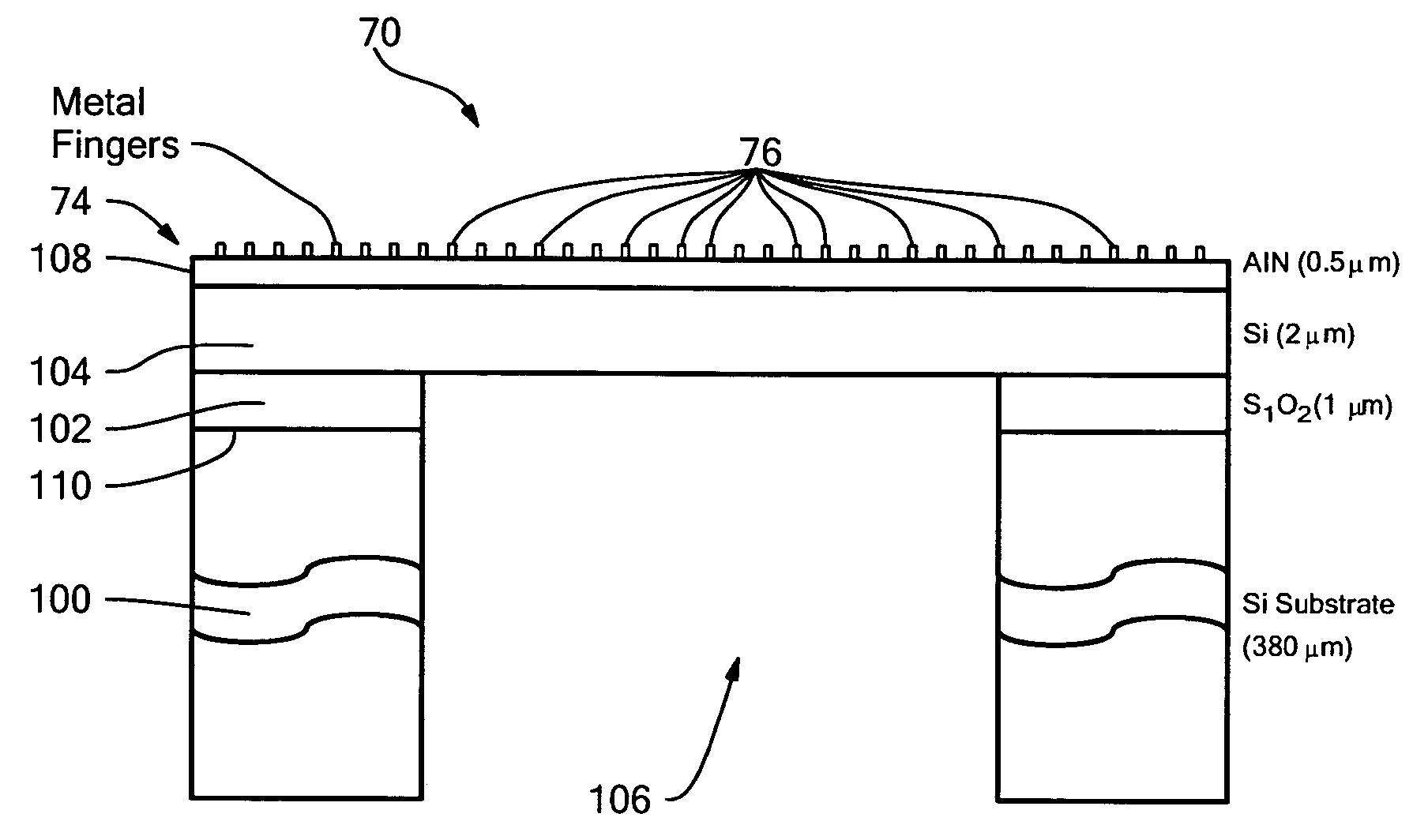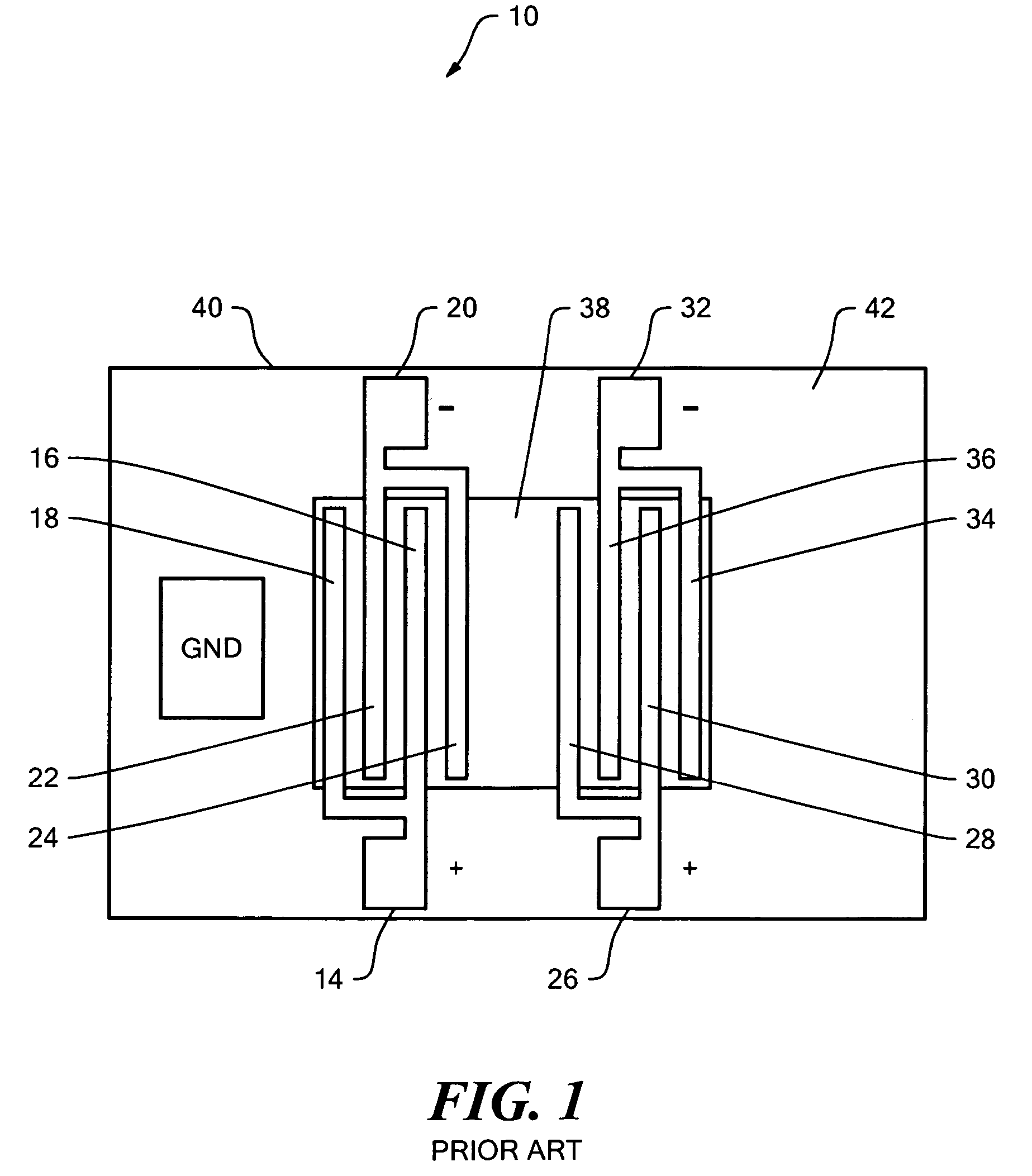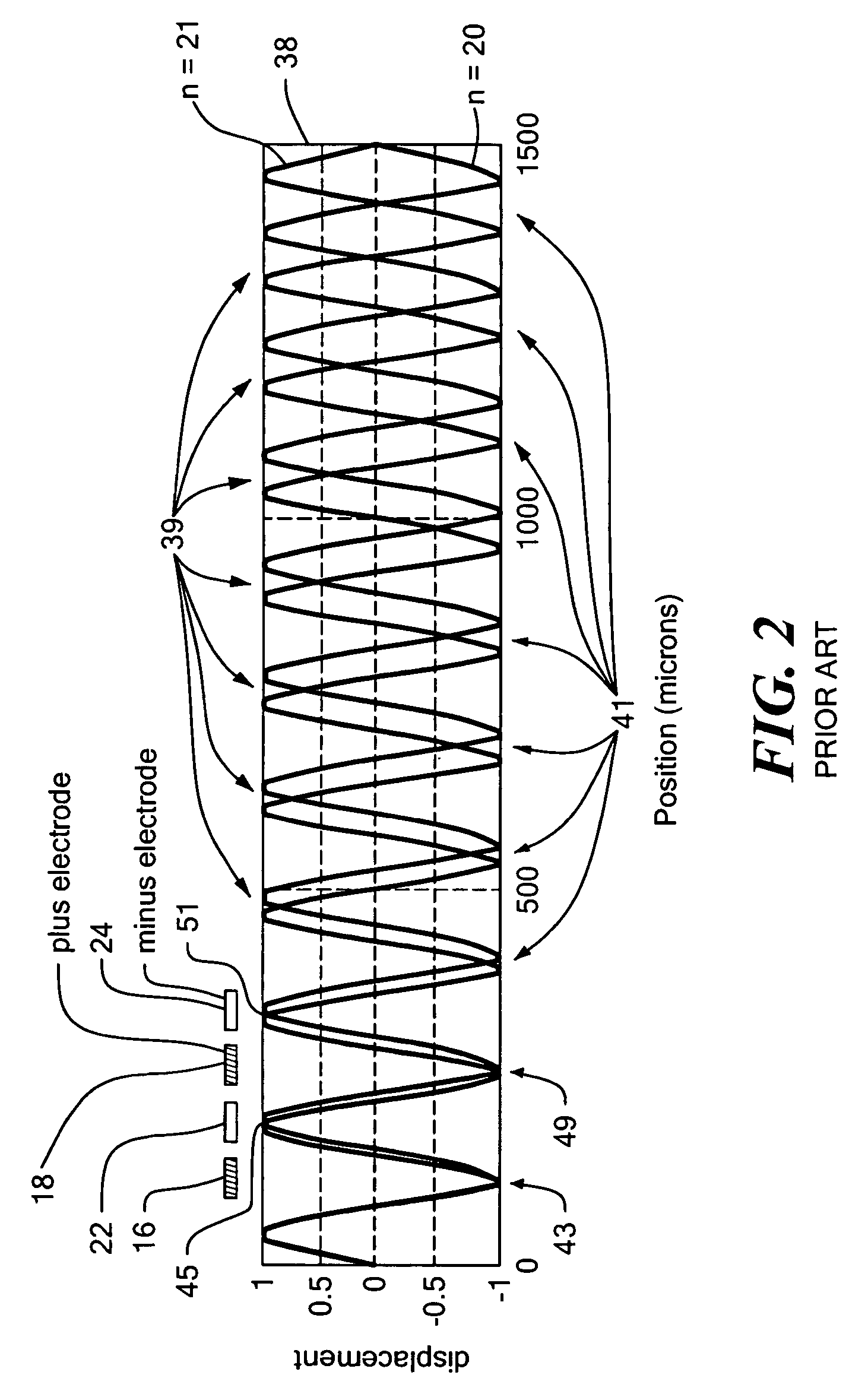Flexural plate wave sensor
a technology of flexural plate and wave sensor, which is applied in the direction of fluid pressure measurement, generator/motor, instruments, etc., can solve the problems of increasing the design complexity and the operation of the prior art calculated gains, etc., and achieves the reduction of the number of eigenmodes excited, simplifying the operation and design of the flexural plate wave sensor, and simplifying the effect of eigenmodes excited
- Summary
- Abstract
- Description
- Claims
- Application Information
AI Technical Summary
Benefits of technology
Problems solved by technology
Method used
Image
Examples
Embodiment Construction
[0050]Aside from the preferred embodiment or embodiments disclosed below, this invention is capable of other embodiments and of being practiced or being carried out in various ways. Thus, it is to be understood that the invention is not limited in its application to the details of construction and the arrangements of components set forth in the following description or illustrated in the drawings.
[0051]As discussed in the Background section above, prior art flexure plate wave sensor 10, FIG. 1 includes drive comb 14 with drive teeth 16 and 18 and drive comb 20 with drive teeth 22 and 24. Typically, drive combs 14 and 20 are driven at opposite polarity, e.g., drive comb 14 is driven at a positive polarity and drive comb 20 is driven at a negative polarity, to align with the positive and negative peaks of the eigenmodes.
[0052]As shown in FIG. 1, drive combs 14 and 20 are disposed over only approximately twenty-five to forty percent of the entire length of flexural plate 38. Because of...
PUM
| Property | Measurement | Unit |
|---|---|---|
| thick | aaaaa | aaaaa |
| thick | aaaaa | aaaaa |
| thick | aaaaa | aaaaa |
Abstract
Description
Claims
Application Information
 Login to View More
Login to View More - R&D
- Intellectual Property
- Life Sciences
- Materials
- Tech Scout
- Unparalleled Data Quality
- Higher Quality Content
- 60% Fewer Hallucinations
Browse by: Latest US Patents, China's latest patents, Technical Efficacy Thesaurus, Application Domain, Technology Topic, Popular Technical Reports.
© 2025 PatSnap. All rights reserved.Legal|Privacy policy|Modern Slavery Act Transparency Statement|Sitemap|About US| Contact US: help@patsnap.com



